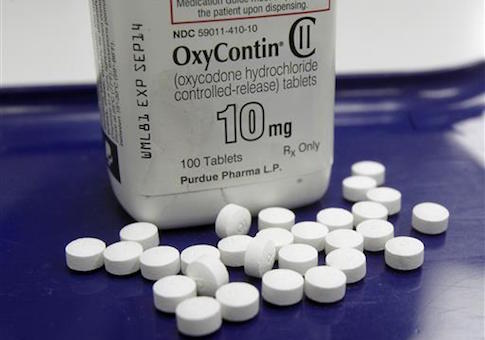Roughly one in three Americans receiving subsidized prescription drugs from Medicare are using commonly abused opioids such as OxyContin, according to a new report.
The Department of Health and Human Service’s inspector general released an audit finding spending under Medicare Part D continues to skyrocket, increasing by more than $10 billion over the past three years.
Over $4 billion went to pain-relieving narcotics that are commonly abused, raising fraud concerns within the program.
"Since the Part D program went into effect in 2006, the Office of Inspector General has had ongoing concerns about abuse and diversion of Part D drugs," the report said.
"A high proportion of Part D beneficiaries continued to receive commonly abused opioids, which also raises concerns," the inspector general said. "In 2015, almost 12 million beneficiaries—30 percent—received at least one of these drugs."
"On average, each of these beneficiaries received five prescriptions for commonly abused opioids during the year," they said.
The report cites Schedule II and III opioids as commonly abused. "They can create a euphoric effect, which makes them very vulnerable to abuse," the inspector general said.
Government spending for commonly abused opioids were highest last year for OxyContin, the generic brands for Vicodin and Percocet, and fentanyl, one of the strongest opiate drugs on the market.
The family that made billions of dollars off Oxycontin has donated heavily to presumptive Democratic nominee Hillary Clinton and her family’s foundation.
The proportion of Medicare Part D beneficiaries receiving opioids was higher in the south. Forty-two percent of beneficiaries were taking commonly abused opioids in Alabama.
"Similarly, Mississippi, Tennessee, Oklahoma, and Arkansas each had approximately 40 percent of beneficiaries receiving commonly abused opioids," the inspector general said.
The inspector general said the $4.1 billion spent on commonly abused opioids "raises concerns about the misuse of these drugs."
"Opioid use can be appropriate in some cases," the inspector general said. "However, misuse of opioids not only has serious financial costs but also human costs, including deaths from overdoses. Moreover, these continuing high rates provide further evidence of this crisis facing our Nation."
Another red flag raised by the inspector general was that spending on commonly abused prescription drugs has greatly surpassed the growth in the number of Americans enrolled in the program.
Spending on commonly abused opioids has increased 165 percent in the past decade, while the number of beneficiaries has only grown by 76 percent.
The use of compounded drugs, which are customized by doctors for specific patients, in the program is also skyrocketing. The share of spending on compounded topical drugs such as creams, gels, and ointments has increased by 3,466 percent since 2006, totaling $224.3 million in 2015.
Overall, spending on Medicare Part D reached the highest ever for the program at $137 billion last year, an increase of 167 percent since 2006.
"In 2015 alone, total spending increased by $15.6 billion, marking the third consecutive year that spending increases surpassed $10 billion," the inspector general said.
